
Table of Contents:
– Background
– What Alpha Tier Gets You
– Core Zero Compromise Technologies
– Look and Feel
– Reticle Options
– Comparative Optical Evaluation
– Mechanical Testing
– Summary and Conclusion
– Testing Methodology
Background:
I first spoke to Jeff Huber, the Co-owner of ZCO a little over ten years ago. At that time, he was the dude at Nightforce. Jeff is both humble and private. He would never say that and is almost certainly reading this cringing wishing I would just stick to the product. When I spoke to Jeff ten years ago, I was not an editor on SnipersHide.com or OpticsThoughs.com, nor did I hold any industry press credentials or perceivable sway. I had been mostly doing reviews on variable low power scopes, stuff like 1-4x designs, and I had ideas and reticle designs (both of which I now see were flawed). I had mailed my designs out to several scope companies, having no idea at that time what the bane of a scopemaker’s existence reticles are. They are like opinions and assholes, in that everyone has one and most of them stink. Scope companies hate reticles because, fundamentally, everybody wants one that is a little different so there is just no winning. The most functional design ever made would still have 30% of potential buyers hating it. Jeff was not interested in the reticle I sent him, but he called me anyway to discuss reticles, scopes, and the direction I saw the industry going. That struck me because nobody else that I sent that letter to responded this way. Generally, scope companies have a reputation for being late to the party with the features people want and even for obstinately refusing to produce scopes with those features because any new features in optics must be a passing fad and consumers are all too dumb to be listened to. Trust me, a lot of scope companies worked hard to fully deserve that rap. Clearly, Jeff was very different than this.
In the intervening years, things went sour between Jeff and some other folks at Nightforce. The courts eventually ruled that they breached his contract and wrongfully terminated him. Jeff never says anything about any of this, but you can read all about it in the public record. They were such naughty boys and girls that they had to pay Jeff treble damages. After Nightforce, Jeff formed HPS optic with Nick Gebhardt to be the U.S. Importer/Distributor for Kahles optics. At this time, Swarovski had decided to dip their toe into the precision long range shooting business and so had revived the Kahles name to be able to do so without feeling dirty about it or angering too many bird-watching types. It was a huge product launch. I recall they even flew Frank Galli out to Austria to see the factory. Under HPS Optics’ guidance, Kahles did quite well. Well enough that Swarovski eventually decided to distribute Kahles themselves, though they still feel really dirty about it and try to hide Kahles in the corner of their booth. Perhaps realizing that owning a company is a more permanent situation than running one, Jeff rolled HPS Optics over to become a portion of Zero Compromise Optics. ZCO consists of a unit in Orofino, Idaho which handles all of North America, Australia, and New Zealand. This includes full assembly, repairs, customer service, and marketing. ZCO also consists of a production facility in Austria where the components are manufactured and the European market is served. This production facility is ZCO’s. They are a manufacturer, not a brand who OEMs. It is hard not to see the existence and geographic locations of ZCO as the tying together of each part of the history of Jeff’s career. I think it makes for an interesting origin story.
What Alpha Tier Gets You:
Many of you have likely read my series of sub-$1k long range ffp optics and know that I am impressed with the recent improvements in quality and functionality of scopes in that price range. You can now get a scope for less than $1k that tracks correctly, has the proper features for long range shooting, and also isn’t optically terrible. So, why spend $3-8k on an alpha optic?
The first, and I would say most important, reason people buy alpha tier optics is to better see their misses. The biggest thing separating the alpha brands from other optics is the quality of the glass, coatings, and optical design. These scopes are expected to outperform lower cost optics in every area of optical performance, and they typically meet that expectation. That is what makes them alpha tier optics. The biggest thing this better optical performance translates to for the shooter is the ability to better see where shots have gone. This can mean seeing trace on a shot and therefore being able to see where a miss went on a target that did not have a nice dirt berm behind it to easily see splash on. It can mean actually seeing where exactly on a piece of steel your particular bullet impacted when, with a lesser scope, all you would know is that you got a hit. It can mean you see a leaf move beside a target indicating where your miss went in an area of heavy foliage where a lesser scope sees nothing and you have no feedback. It can even mean being able to actually watch your .22lr projectile fly up and over a 200yard target set in front of a massive ravine and thereby knowing where your miss went and being able to correct for a secnd round hit as I did in one instance with the ZCO. This stuff matters a great deal when it comes to putting bullets on targets because shots downrange are data but you need to know where those shots went to get that data and it sometimes takes very good optics to see that.
In addition to being able to make better follow-up shots because you see your shots better, an alpha scope can sometimes help the first shot to be better placed as well. This is principally because they better handle mirage. When looking though better scopes, it is easier to distinguish what is mirage and what is the background to that mirage – such as the target. This both helps you to better hold steadily on a target with mirage in front of it and also helps you to better read the wind based on the movement of the mirage. What looks like blurry and indistinct movement of the target though a low cost optic can appear as distinct waves of mirage moving in front of a distinct target though an Alpha scope.
People often expect better durability and reliability with alpha scopes, but this is a mixed bag. Certainly, the glass coatings on alpha scopes are generally better, last longer, and are more scratch resistant. The materials the scope is made of are also stronger and longer wearing. However, many alpha tier makers have had significant issues in the past stemming from specific design problems. Their turrets are typically far more complicated than lower cost scopes and many, perhaps most, makers have had issues resulting from that. ZCO has put emphasis on a few core technologies related to durability. You will read about this in the next section and I have not heard of people having any issues in the durability department, so they may well deliver on the durability people have long expected from alpha optics but sometimes not received.
I think that I would be remiss to leave the discussion of why people choose alpha scopes without touching on the enjoyment of using them. They deliver a clearer, bigger, prettier, image of the world. They have nicer feeling, and more feature rich, controls. Because of these things, they are just more enjoyable to shoot, all performance gains aside. For most of us, long range shooting is a hobby that we do for enjoyment. It is more enjoyable to use really nice optics.
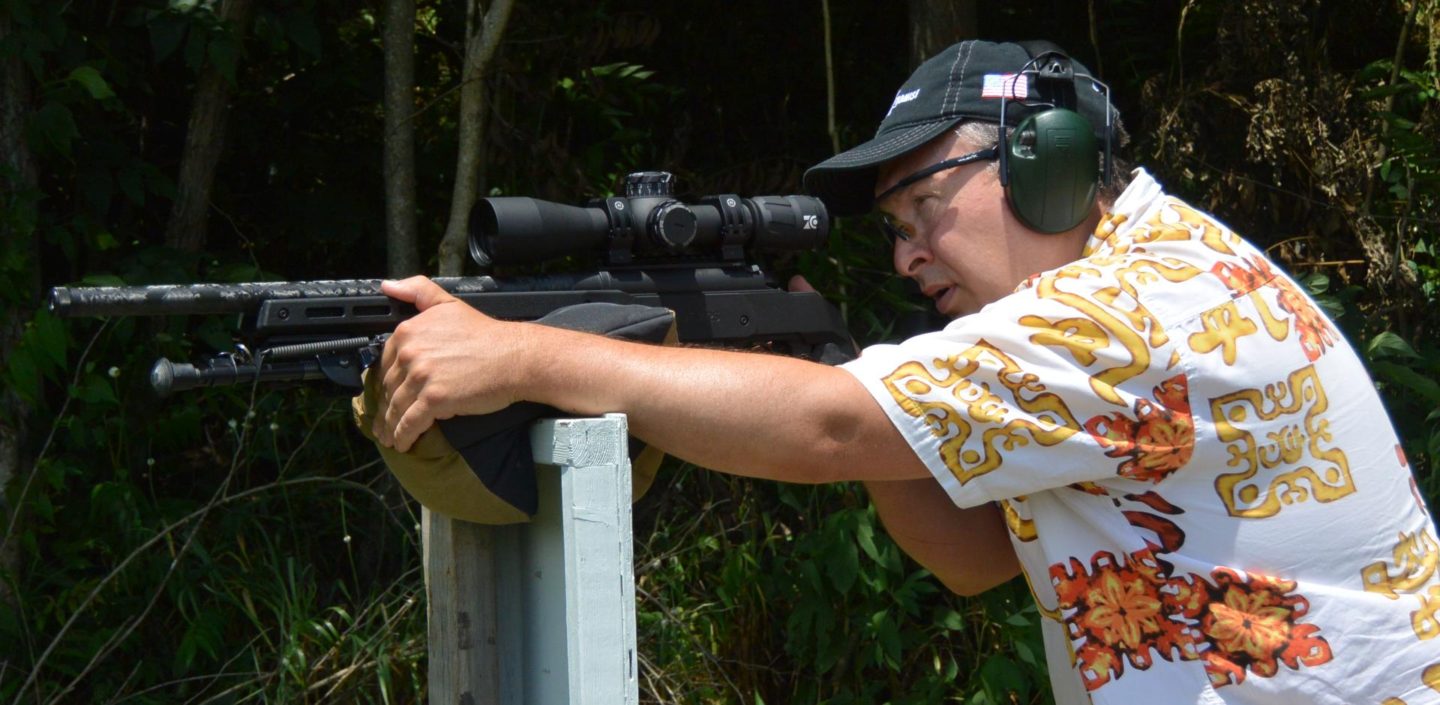
Core Zero Compromise Technologies:
ZCO advertises itself as “uncompromising”, “performance driven”, and probably some other nebulous superlatives, but has been a bit cagey when it comes to specific features that set its products apart. Since I have great faith in competitors’ abilities to go to the store and buy a scope to disassemble, I will go into a few core differences between ZCO scope construction and the industry norm that would qualify as better ways of doing things.
Most scopes have lenses that are held into the scope tube by locking rings that essentially work like inside-out jam nuts where the thread is on the outside of the nut instead of inside and the inside of the scope tube is what they thread onto. The edge of the lens is sandwiched in-between two of these locking rings. As you can imagine, this puts some degree of stress on the lens and that stress can sometimes be a bit uneven. It is also an arrangement that can sometimes loosen over time under the rigors of recoil or other indignities that scopes are routinely subjected to. Some of you will remember the old Nightforce military F1 scopes that added epoxy to the lens mounting procedure to improve the durability at the cost of complicating the repair process should the scope require repairs. ZCO refines this idea by bedding each lens into an aluminum frame that holds the lens in a proprietary way before putting it in the scope. In this manner, the lens has minimal stress and is permanently bonded in its frame. The frame can then be more securely positioned in the scope tube. ZCO calls this the center lock system.
You may have wondered what makes the clicks in most scopes on the market. It is not very complicated. There is a tiny ball bearing known as a ‘detent’ (rhymes with “he went”) that is spring-loaded against a set of ridges around the inside of the turret. When you turn the turret, each click is the feeling of the ball being pushed in by a ridge inside the turret and popping back out in the next valley between ridges. It’s sort of like running a ball point pen against the striations on the edge of a quarter. The system works mostly okay but can create two issues. First, you have a stiff little spring pushing just one way inside the turret. This pushes everything to one side and can cause uneven wear or binding. Next, that hard little ball has the tendency to wear down those ridges as it is bearing on them at just one point and they are of a softer material. Over time, this makes the clicks less positive in feel. ZCO uses two detents pushing opposite directions to solve the uneven force problem and uses roller bearings instead of ball bearings for the detents to solve the wear issue.
You may think that most scopes turrets have some sort of ball or roller bearing that they run on. In reality, you would be more likely to call the system most use a bushing rather than a bearing, as there are no rollers of any kind interposed between the surfaces sliding on each other. Instead of doing this, ZCO rides their turrets on two series of needle bearings. By using this rolling, instead of sliding, friction, ZCO can essentially pre-load their turret, eliminating the slop native to a bushing type system.
Lastly, ZCO has added a significantly more automated illumination management system than most. They call this the Automatic Illumination Management or (AIM) system. This is not an advanced daytime bright illumination technology like fiber optics or phase diffraction, but rather an advanced brain for controlling when to turn it on and off. The system automatically shuts the illumination off if the rifle is tipped or set motionless awhile. It can then be awakened by moving the rifle back to a firing orientation. It will also shut off the illumination entirely if you sit the rifle for two hours or more and require turning the knob to wake it up. Lastly, it will flash to warn you if it is running low on battery. ZCO’s illumination system also has a dip switch under the cover to choose red or green illumination and a second switch to turn off the fancy AIM system if you just want dumbass illumination. The illumination control has night vision settings as well as naked eye settings, as you probably expect from a scope in this price range.
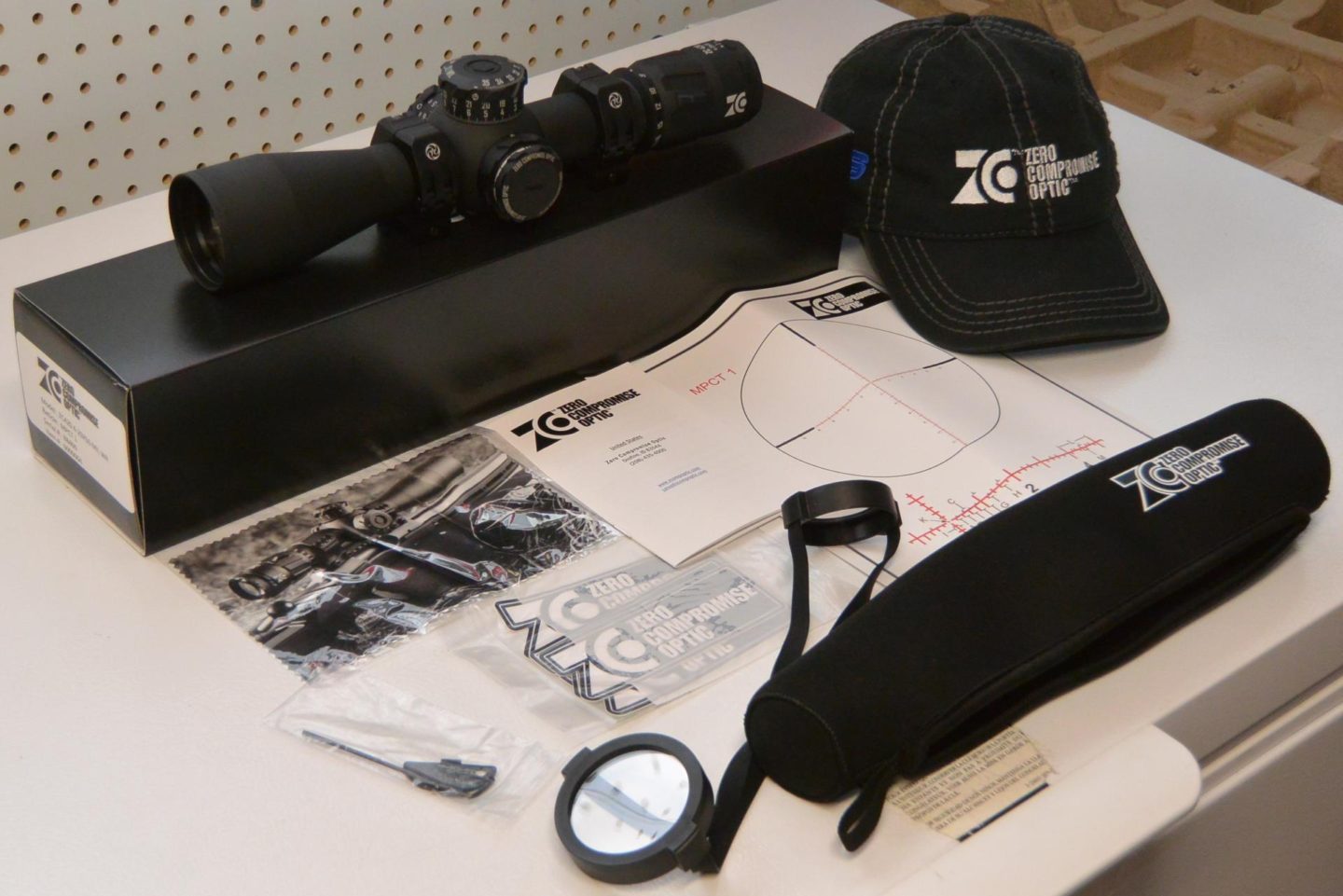
Look and Feel:
ZCO is essentially a half European, half American scope company and that is very much how the look of their scope strikes me. The big white ZCO logo and rounded edges on all the knobbies have a European look, whereas the completely flat color, low and wide turrets, locking diopter, and angled numbers on the power ring have a distinctly American look. I find the combination of influences make for an attractive scope. The ZCO 420 is quite short at 12.8″ but not particularly light at 34.8oz. Probably the most unusual thing about the ZCO’s dimensions is its 36mm size. This is a pain in the ass for rings as many makers don’t do 36mm. I am told this was necessary to fit both the elevation desired and the size lenses in the erector assembly desired. To go smaller would have either meant less range or less optical performance, so a pain-in-the-butt ring size it is. I’ll go on record as saying the 34mm, 35mm, and 36mm scope sizes we now have running about seem a burdensome redundancy to me.
Both the elevation and windage knobs are locking with the familiar pull up to unlock push down to lock function. They are not spring-loaded and so can be left locked or unlocked. The clicks are easily audible and the feel of the clicks is positive but not so stiff that you can’t click just one at a time and count them without breaking shooting position. In other words, they have excellent feel and the force required to move them is well calibrated. The huge but melted knurls found on the turrets as well as every other control will not cause discomfort with bare hands, but will also present no problems in getting purchase when muddy and slick or when gloved in cold weather. Excellent choices on the knurling. The windage turret is single rev and gives you 7 mils each way to the stop. The elevation turret has 15mils per turn and can do two and change so that you could actually use all 35 mils of internal elevation. As with most high-end optics, this is a non-lifting elevation knob, meaning that the knob you are turning does not physically raise as you turn it. As with most turrets of this design, it has a pop-up turn indicator and when you set the zero you have also set the zero stop. The scope gives you a set travel below instead zero of you being able to select an amount. In this case, you get .5 mils. Setting the zero stop is almost as you expect. Once you have sighted in the rifle, there are two set screws you loosen (with turret unlocked) before you turn the now not clicking turret to the zero. The catch is that then you just barely tighten them the set screws and push the turret down to lock it. This aligns the locking spline so that all your hash marks line up. Lastly, you loosen and fully retighten (still just five inch lbs) the two set screws.
The parallax and power rings turn with a properly calibrated amount of force, as does the diopter. It is notable that the diopter is a euro style fast turn but with an American style locking ring. The ZCO’s diopter also has notably more range than is average in the scope industry, a feature I am growing to appreciate as I inch closer to the edge of the average range. As is common, the illumination controls for the ZCO are on the parallax knob. These do not take much force to move and do not move with the parallax knob so it is rather easy to accidentally activate the illumination when adjusting parallax. Even as I write this, I look down to see that this has happened on mine. It is easy to not notice when you accidentally activate it since the maximum illumination is not daytime bright. I therefore suggest that you do not deactivate the AIM illumination management system discussed earlier, as it will save you many batteries. Nevertheless, the control scheme is intuitively laid out with a tactile detent at ‘off’ and then a smooth clockwise for brighter naked eye or counter-clockwise for brighter night vision. Illumination of the reticle lights the entire graduated section but not the thicker lines outside of the graduated section.
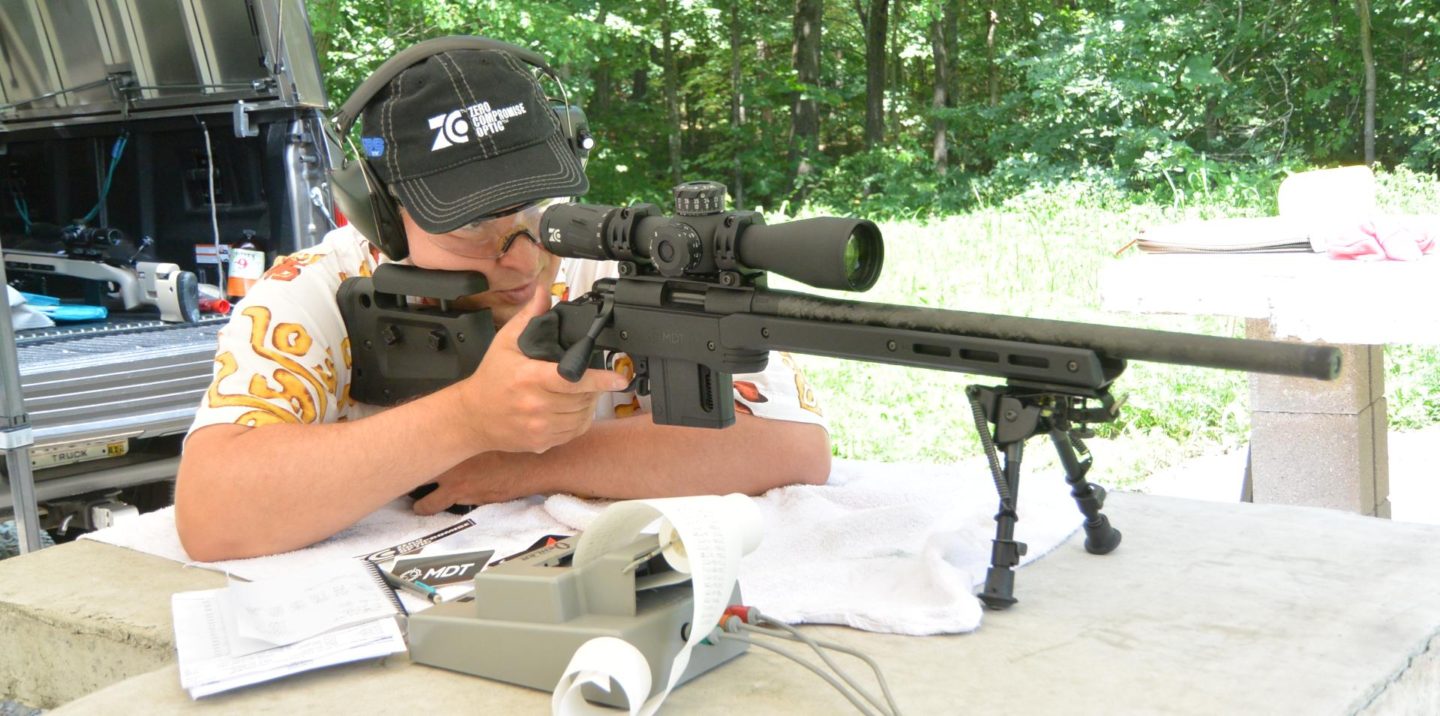
Reticle Options:
At the time of this writing, ZCO has three reticles, mostly designed by Nick Gebhardt, who is a pretty successful competitive shooter as well as ZCO employee. All three are well reasoned even if I don’t totally agree with all the choices and they cover a lot of ground in terms of what different people want. They all share the similarities of a thinner than average .034mil line thickness which I like, .2mil graduations, and a floating central dot, but differ substantially beyond these basics.
The MPCT 1 reticle is ZCO’s basic mil hash reticle. It has no Christmas tree at all and looks quite like what you would expect. Its biggest twist from the norm is that it never goes to a thick crosshairs in the 6 o’clock quadrant and is instead fully graduated and labeled out to 32mils, so knock yourselves out ELR guys. For the review, I chose to go with this simplest of reticles because lately I don’t find myself using Christmas tree sections much in the scopes I have that have the trees and am finding mostly that they annoy me by making it more difficult to see splash and determine exactly where my impact point is. I’m sort of turning against the concept that I once supported. If I were to change something on the MPCT 1 reticle, the first change I would make would be to eliminate the 12 o’clock portion of the crosshair to make trace easier to see. I’ve really become all about seeing as much as I can and this is doubly true on a scope with such excellent optics.
The MPCT 2 reticle is basically an MPCT 1 plus a Christmas tree section. Its biggest departure from the norm is that the Christmas tree does not start until two mils down so it will not obscure a near miss. The MPCT 2 is probably the most common reticle sold and is the best in line with current market trends, but I’m sort of going off the reservation in my thinking lately which might be unfair since I’m probably partially responsible for building such opinions.
The newest ZCO reticle is the MPCT 3 and it is well out of the norm. It has the .2 mil hashes and a floating dot center but brings back dots, in this case hollow ones, for the full mil divisions. The MPCT 3 also does away with all but two mils of the 12 oclock crosshair and instead puts a pinch style rapid ranging section, or fatal funnel, there to range horizontal dimensions. Lastly, it has a Christmas tree section but done in the grid style that is starting to gain popularity. If this teaser sparks your interest, Nick did an excellent write-up article with more detailed explanations. For my part, I like the use of hollow dots and the idea of incorporating a pinch type rangefinder as rapid ranging can be a useful feature in the real world where you don’t always have a working laser in your hand. I should also mention for the .mil types that the inferred lasers used by rangefinders are like giant beacons pointing exactly to your position if your enemy has the not so rare technology to see infrared light. I am confident that bambi will not be making you because of your rangefinding laser, but I think that it is quite likely most of Americas’ opponents will in the near future. That being said, the gauge in the MPCT 3 is exactly where I would like to see my trace and objects have the tendency to orient themselves vertically not horizontally so I think vertical pinch gauges are generally more useful than horizontal ones. I do think these 12″ and 18″ gauges might be great for the occasional PRS stage that makes you analog range plates of that size, though, especially since those plates are always nicely oriented 90 degrees to you instead of randomly rotated like all objects are in the real world. All in all, I find the MPCT 3 a bit of a mixed bag, but it is at least a different mixed bag and I appreciate that. I did actually initially try to get one on the review scope to see what I thought in practice, but they were not yet available in the 420s.
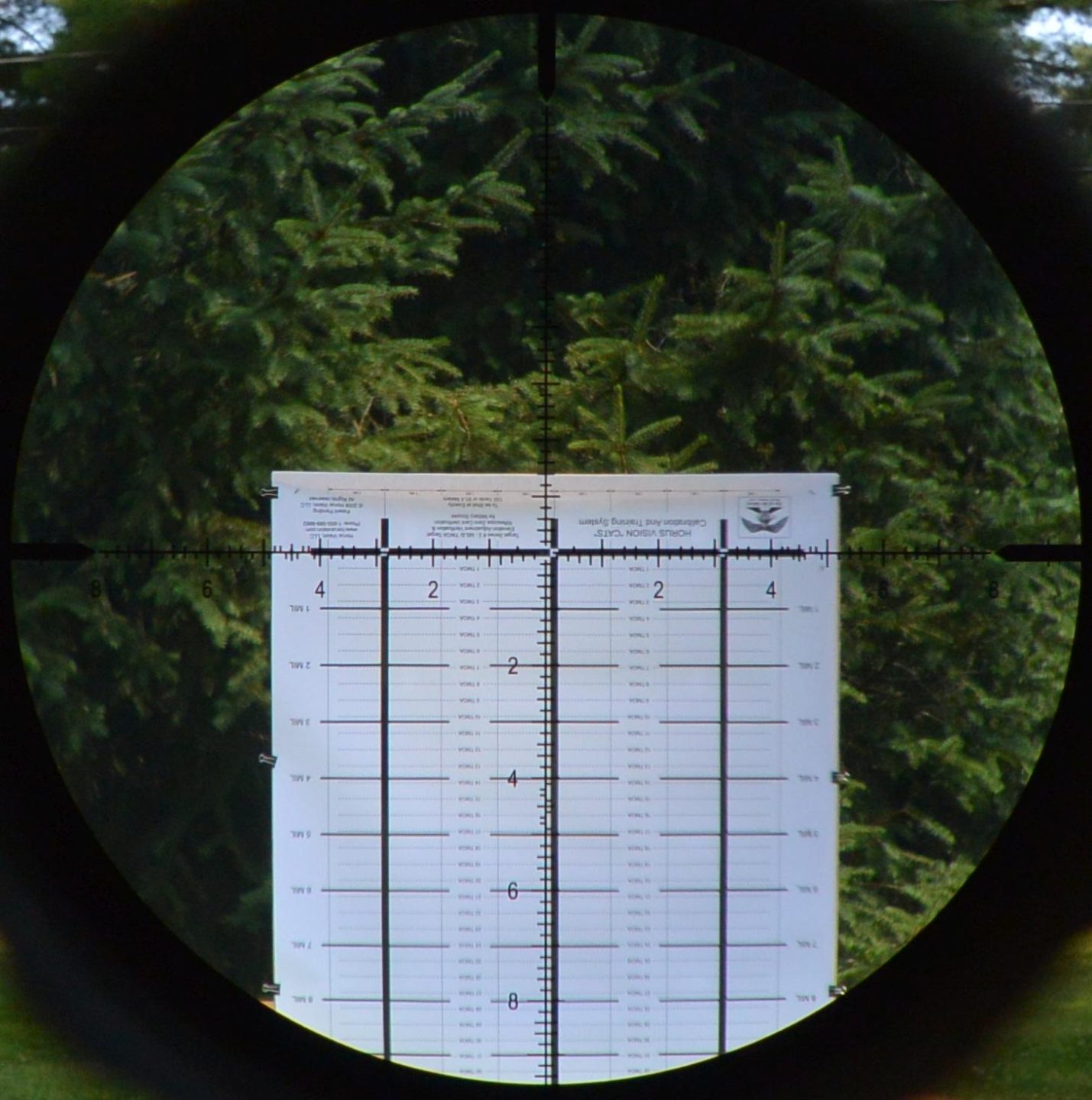
Comparative Optical Evaluation:
For comparison to this ZCO 4-20×50 I borrowed a S&B PM II 3-20×50 as well as a USO SN3 3.2-17×44. I also threw the Athlon Midas TAC 5-25x56mm on the rack just for perspective. The S&B is one of ZCO’s closest competitors and the brand people are probably most interested in seeing ZCO side by side with. The USO is one tier down from these alpha players and is a pretty good stand in for a lot of the scopes in that tier such as the Vortex Gen II Razor, as it ran neck and neck with that scope when I reviewed the Razor HD II 4.5-27x56mm a few years ago. I will highlight here that all scope designs, even ones from the same company, are unique. In this review, the USO is standing in for a lot of second tier scopes and the S&B PM II for a lot of alpha tier stuff. That does not mean that they are the same as all, or any, of the scopes they are acting as the stand in for. Quite frankly, I would be surprised if most S&B’s designs struggle with chromatic aberration as much as this PM II 3-20x50mm did. Every optical design has its own unique strengths and weaknesses, and scopes similar on balance may be very different when it comes to performance on specific metrics. Also keep in mind that despite having four scopes in the v-block most of the time, pretty much all the comparisons will come down to the S&B and ZCO as the two were significantly distant from the others in most metrics
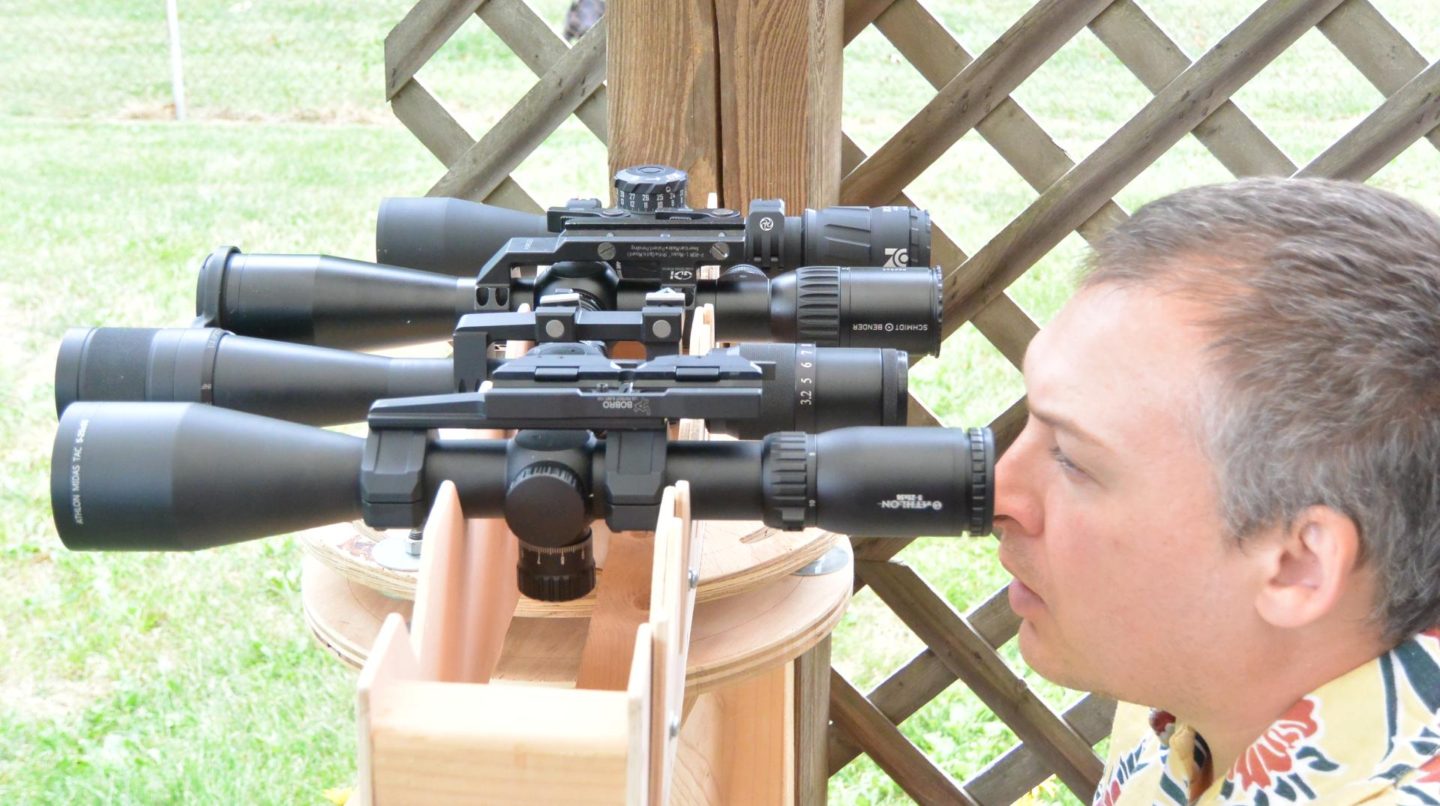
I think I will start the optical performance with the specifics and move to the general. ZCO’s strongest metric is without question chromatic aberration. This scope is the best I have ever tested in that regard by a substantial margin. Pretty much regardless of what conditions you try, you just don’t see any CA at all. This really underlies and enhances all the rest of the scope’s performance. It’s a big deal because CA doesn’t just mean that you see some purple halos around black lines on a target; it also means that when looking at complex objects with a variety of colors, they will generally appear less sharp and distinct. When testing resolution with standard optical test targets, The ZCO had only a slight edge over the S&B. However, when looking at real, complex, natural objects, the ZCO appears much sharper because it shows almost no CA whereas the S&B struggles with this even to the point of being significantly bested by the lower cost USO in that regard. Throughout the course of this review I spent a very substantial amount of time trying to tease out exactly which scope performed better with respect to which aspect of optical performance and I find this a little ironic because the differences were so small in so many of these areas that which scope had the edge matters little. Meanwhile, the difference in the scopes when it came to CA was immediately evident and of such magnitude as to render my clear preference in overall optical performance to the ZCO.
Many of the aspects of optical performance that I evaluate fell into the pattern of being both very close between the ZCO and the S&B and also very good relative to the other optics on the stand and, in my opinion, optics in general. For instance, the ZCO had a slight edge over the S&B in resolution, depth of field, and optical performance at the edge of adjustment travel range, with both scopes being excellent overall. When it came to edge-to-edge clarity, contrast, and barrel / pincushion distortion, both scopes did quite well and I really could not pick a winner. The eye boxes of both scopes were acceptable though I felt the S&B was the better of the two in this regard. The S&B was also slightly better in low light / night conditions and I felt this, as well as the field of view size advantage the S&B has, were its most significant advantages, though I will also mention that the S&B has a power range advantage going down to 3x instead of 4x which is made even greater by the ZCO tunneling just slightly (4.5x to 4x) whereas the S&B does not tunnel. The origin of this slight tunneling in the ZC 420 is some shared erector components between it and the larger ZC 527.
On what you might call the more standalone measures of optical performance, I found the ZCO to have very accurate color rendition. It did not seem to favor one or another part of the spectrum significantly. This rendered objects very much as you would see them with the naked eye. When put difficult stray light situations such as direct sunlight on the objective or sun at ~20 degrees from point of aim, the ZCO did very well. Sunlight on the objective did not cause noticeable hazing to the image or worse, any sort of bloom. At no angle did the sun cause a complete image white out and what optical bloom did occur at the most challenging angles was pretty well controlled.
I will last speak about the ZCO and mirage. Many have noted how well the ZCO “sees though” mirage. I had an experience with this myself on one of the range days that I was testing the scope, and it was rather uncanny. There was a good boil going all around the target and the target was bending and doing a dance through the other scopes I had on hand (S&B was not one of these), but with the ZCO the target itself was totally clear and motionless. It was like magic. Mirage all around the target but the target itself unaffected. I e-mailed Jeff when I got home to ask if there is some new coating that somehow differentiates and minimizes mirage. How could that even be possible? He said it is not and that better resolution plus better light transmission is why ZCO performs better in such situations. I was not satisfied with this and so devised some cross heated parking lot torture tests for the ZCO and S&B. What I found was that both are very similarly affected by mirage. You could get the target to bounce and bend, just not as much as with lesser optics. You could also read the wind more easily from these alpha scopes. It is almost like it is easier to tell exactly where light is being refracted. Like you can see the individual plumes of hotter air that are refracting the light and watch them move. So, the ZCO’s performance in mirage is not magic or some special ZCO sauce, but do not be surprised if some hot day when you are out shooting you feel like it is.
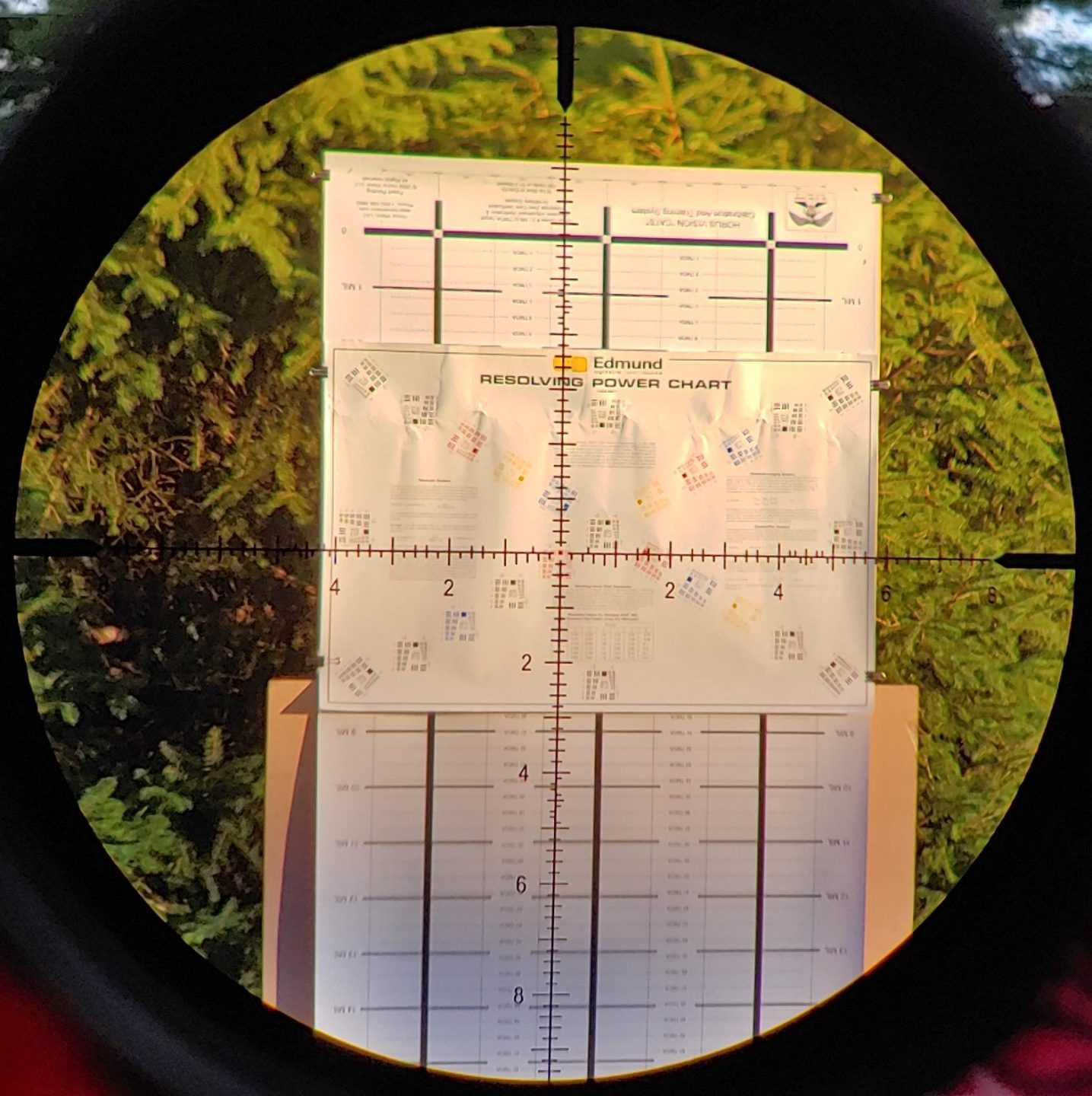
Mechanical Testing:
The ZCO 420 was flawless in the mechanical testing, Often, when I am testing the adjustment tracking and size on a scope, I detect errors significantly smaller than 1%. I do not report these because they are within the margin of error of my test setup and they are not of consequence to a shooter anyway. A .2% error is just 1/5th of a click. You therefore couldn’t adjust for it even if it was real and not just from my test target being about ~7 inches too close or far from the scope. While I am sure my test target is always within a foot of being right, I expect it is often off by 3-5″. Perhaps, this year was a good year for exact target position because the ZCO was exactly on the target in both adjustment magnitude and reticle size. It also tracked right and left correctly to the +/- 4mil limit of my target and did a box run around the extremities of the target perfectly as well. Just as with the adjustments and reticle size being absurdly correct, so also did the reticle have no cant at all. It was just exactly on the line the entire way up and down. For those interested, the S&B had about .6 degrees of cant (.1mil of horizontal in 10mil vertical), so not every alpha scope is perfect though I am inclined to think they should be given the cost.
On the ZCO 420, the distances on the parallax markings tested correct and there was no noticeable lash in that adjustment. With the rise of PRS and its preference for shooting known distances from unusual positions with very little time, the marking accuracy of the parallax knob is becoming important. There is simply not time to properly test the parallax on the clock with head bobbing, yet it is important that it be correct since your head position likely often isn’t. Setting the knob based on your known distance is the only way to go in that situation and this is something I am going to start judging scopes more harshly on going forward. Fortunately, I have recently seen a trend toward these knobs starting to have accurate readouts when the scope is tested at a roughly 75 degree room temperature. The shooter should note that the temperature of a scope will affect the accuracy of its parallax reading significantly. ZCO has gone to some lengths to ensure accurate parallax settings, even to the point of installing extra climate control equipment to make sure the temperature at which the parallax is set is consistent.
Lastly, the ZCO 420, having a pull up / push down, locking turret was expected to have some lash in the adjustments because a spline is necessary for such a turret function and there must be some play in that spline or it will bind. This was seen in my Meopta Optika 6 review not long ago and was one of the things I was most concerned with in the ZCO’s design. However, the amount of play in the ZCO proved to be only about .02 mils. This is just over half the line width of its fairly fine-lined reticle and is a very good result – well worth the addition of the locking function.
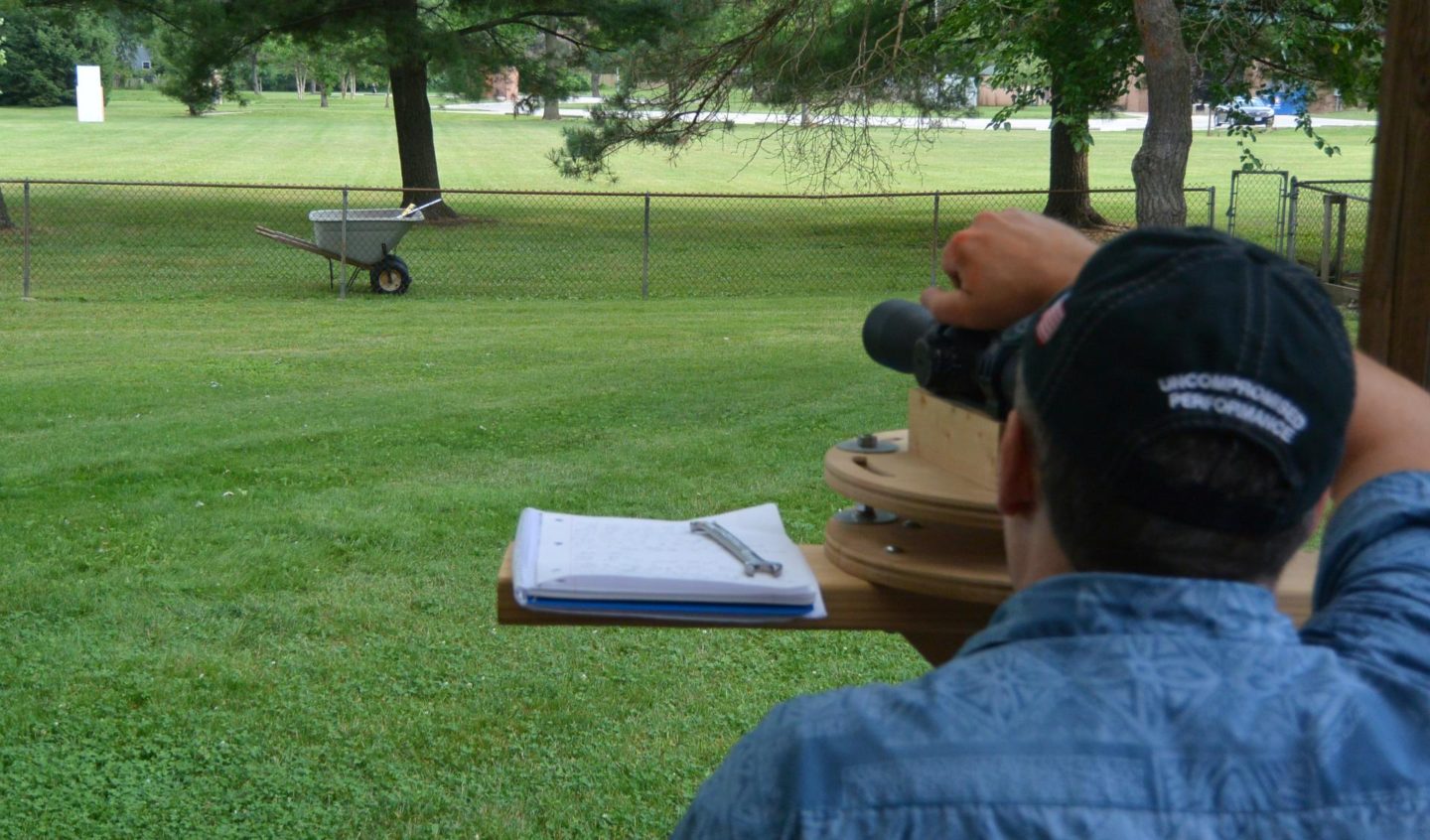
Summary and Conclusion:
The ZCO 420 surprised me with its optical performance. I expected it to be good, but I did not expect the margin by which I felt it exceeded the S&B and USO in optical performance, especially given its much smaller ultra-short physique and the compromises in performance that typically entails. When shooting the ZCO, I was pretty impressed to occasionally clearly see my .22lr bullet in flight at 200yds and be able to make effective adjustments based on it. I was also amazed at it’s handling of mirage to the point that I thought their might be some new special sauce I needed to learn about.
Mechanically, the ZCO was equally impressive. Tracking, click magnitude, reticle size, cant, even parallax labeling were absolutely spot on. The clicks even had the positive “clicky” feel the market seems to want without the inability to make just one click at a time that usually comes with such a feel. In adding the locking feature to the turrets, ZCO did so without introducing the substantial lash I feared. Notably, ZCO provides substantially more diopter range than average. A little feature, unless you need it. The only thing lacking execution is how easy it is to accidentally turn on the illumination and how relatively dim max illumination is, but even in the event of inadvertent and unnoticed illumination, a complicated computerized babysitter is included to put it back to sleep before your battery dies.
The decision to create a new optics company, with real facilities and proprietary optical designs, to enter the crowded high-end market without even a legacy nameplate, was a bold one. It’s a tremendous amount of investment risk. The product ZCO is producing exceeded my expectations and, from what I can see, sales are exceeding theirs.

